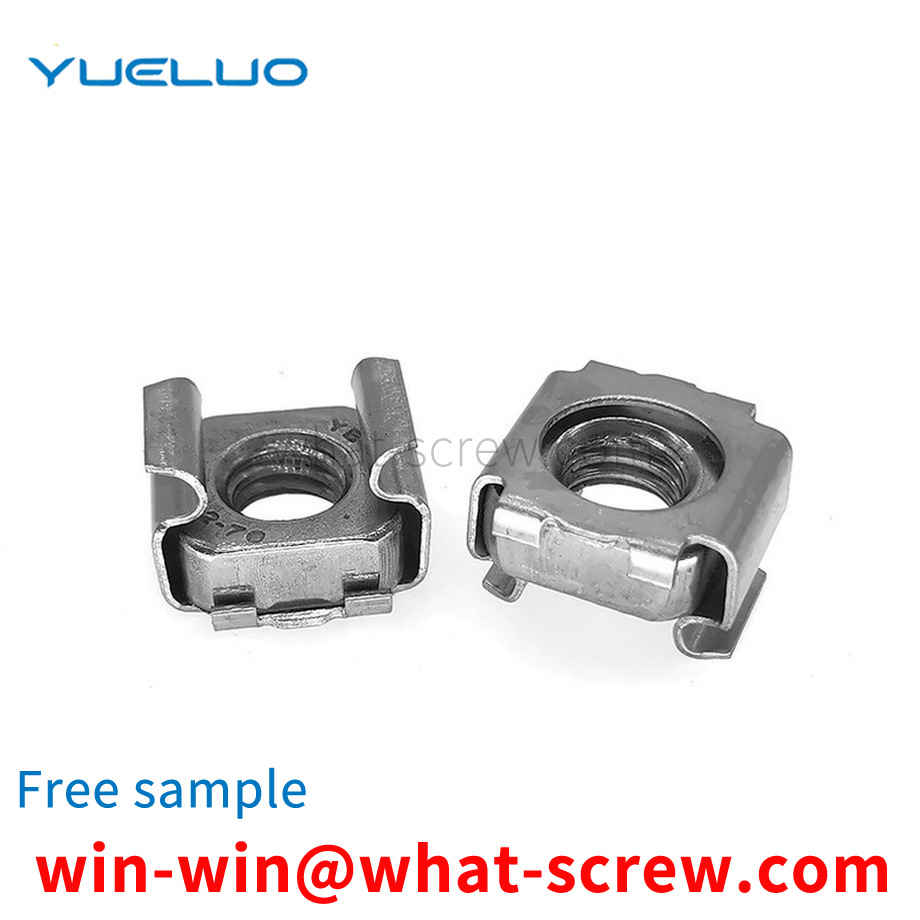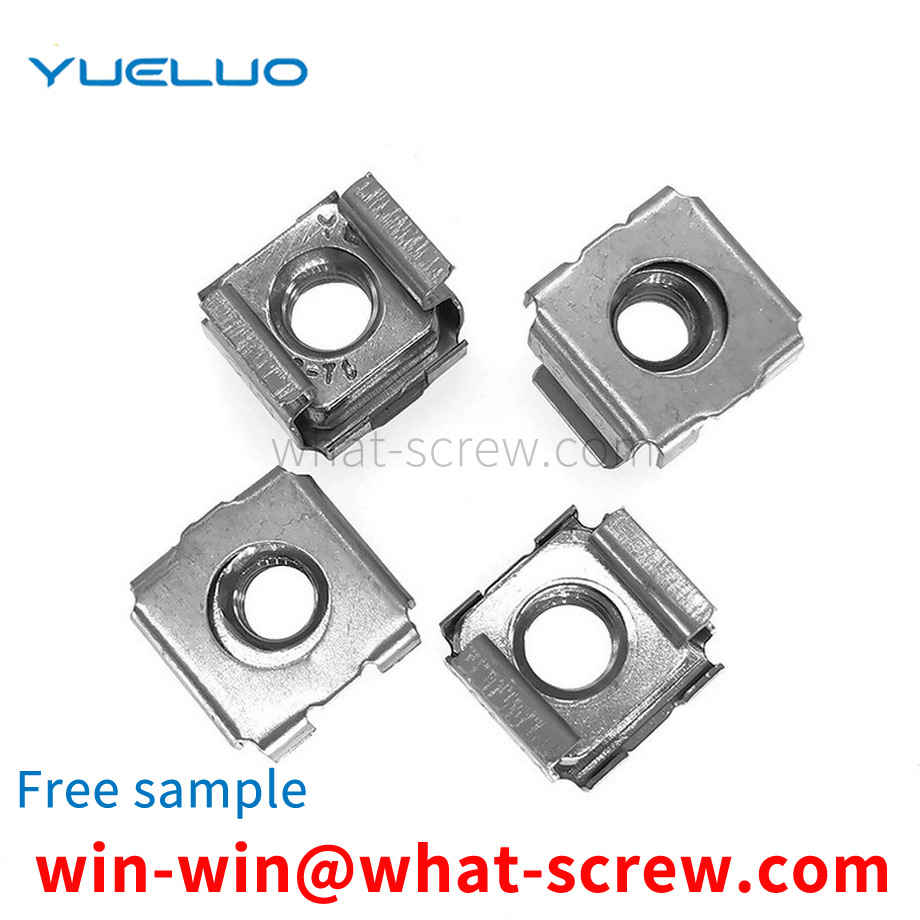Bolt: A type of fastener consisting of a head and a screw (a cylinder with an external thread), which needs to be matched with a nut to fasten and connect two parts with through holes. This form of connection is called a bolted connection. If the nut is unscrewed from the bolt, the two parts can be separated, so the bolt connection is a detachable connection. [1] Stud: A type of fastener that has no head and only has external threads on both ends. When connecting, one end of it must be screwed into the part with the internal threaded hole, the other end must pass through the part with the through hole, and then the nut must be screwed on, even if the two parts are tightly connected as a whole. This form of connection is called a stud connection, which is also a detachable connection. It is mainly used for occasions where one of the connected parts is thick, requires a compact structure, or is not suitable for bolt connection due to frequent disassembly. [1] Screw: It is also a type of fastener consisting of a head and a screw. It can be divided into three categories according to the purpose: machine screws, set screws and special-purpose screws. Machine screws are mainly used for a fastened connection between a part with a fixed threaded hole and a part with a through hole, without the need for nut matching (this connection form is called screw connection, which is also a detachable connection; it can also be Cooperate with the nut, it is used for the fast connection between two parts with through holes.) The set screw is mainly used to fix the relative position between the two parts. Special purpose screws, such as eyebolts, are used for hoisting parts. [1] Nuts: with internal threaded holes, generally in the shape of a flat hexagonal column, but also in a flat square column or flat cylindrical shape, with bolts, studs or machine screws, used to fasten and connect two parts, make it a whole. [1] 5. Self-tapping screw: Similar to machine screw, but the thread on the screw is a special thread for self-tapping screw. It is used to fasten and connect two thin metal components to make them a whole. Small holes need to be made in advance on the components. Due to the high hardness of this kind of screw, it can be directly screwed into the hole of the component, so that the Forming a corresponding internal thread [1] 6. Wood screw: It is also similar to a machine screw, but the thread on the screw is a special thread for wood screws, which can be directly screwed into wooden components (or parts) to connect a band through The metal (or non-metallic) part of the hole is fastened to a wooden member. This connection is also a detachable connection. [1] 7. Washers: A type of fastener with an oblate annular shape. It is placed between the supporting surface of the bolt, screw or nut and the surface of the connecting part, which increases the contact surface area of the connected parts, reduces the pressure per unit area and protects the surface of the connected parts from damage; another type of elastic washer, It can also play a role in preventing the nut from loosening. [1] 8. Retaining ring: It is installed in the shaft groove or shaft hole groove of the machine and equipment, and plays the role of preventing the parts on the shaft or the hole from moving left and right. [1] 9. Pins: mainly used for positioning the left and right parts, and some are also used for connecting parts, fixing parts, transmitting power or locking fasteners. [1] 10. Rivet: A type of fastener consisting of a head and a shank, which is used to fasten and connect two parts (or components) with holes to make them a whole. This form of connection is called rivet connection, or riveting for short. It is a non-removable link. Because if the two parts joined together are separated, the rivets on the parts must be broken. [1] 11. Components and connection pairs: Assemblies are a type of fasteners supplied in combination, such as a combination of a certain machine screw (or bolt, self-supplied screw) and a flat washer (or spring washer, lock washer); Connection pair refers to a type of fastener that is supplied by a combination of special bolts, nuts and washers, such as high-strength hexagon head bolt connection pairs for steel structures. [1] 12. Welding nail: a heterogeneous fastener composed of a nail rod and a nail head (or no nail head), which is fixed to a part (or component) by welding, so as to be connected with other parts. .
Compared with the prior art, the technical effect of Yueluo Company is: during the screwing process of the nut, the tube wall of the nut is elastically deformed so that the convex ring on the screw is matched with the groove on the nut, and the slope of the convex ring matches the groove. The groove wall is abutted against to limit the relative position of the nut tube and the screw shaft in the axial direction, which not only ensures the reliability of the threaded connection, but also achieves a significant anti-loosening and anti-falling effect. After the threaded connection, excessive force is applied to remove the nut and screw, so that it can be reused to save costs.
Stainless steel rivet nuts are used on rail passenger cars, highway passenger cars, and ship parking. The main function is the non-structural bearing bolt connection. The main advantage of stainless steel rivet nuts is that there is no operating space on the back of the substrate, and the quality is extremely light. Today, the editor will talk about the selection principles of stainless steel rivet nuts and their uses: 1. The mechanical properties of stainless steel rivet nut materials, especially the strength requirements; Corrosion resistance requirements of materials;
Existing bolt pairs usually include bolts, nuts and washers, and their specific structures and usage methods are traditionally known and common in life. They will not be described in detail here. You can find relevant bolt pairs by searching for bolt pairs on the Internet. Information picture, the structure of the ordinary bolt pair has basically no structural improvement since it was used as a fastener. The production requirements of ordinary bolt pairs are the basic material, structural strength, and accuracy requirements, while the tightening and anti-loosening requirements The requirements of the effect are basically to achieve the problem of tightening and anti-loosening by using elastic washers, anti-loosening washers or using double nuts.
T-slot bolts refer to the bolts installed in the T-slot. The installation process of T-slot bolts is usually as follows. When the T-slot (generally refers to the T-slot aluminum alloy profile) is set horizontally, the bolt The bolt head is placed in the T-slot in the horizontal direction, the bolt shaft is facing outward, and then the bolt is rotated 90 degrees axially, the bolt head becomes vertical and will not come out of the T-slot, and then install the mounting hole of the object Align the bolt rod and insert it and screw the nut on the bolt rod. During the tightening process of the nut, if the thread gap is small or the thread is damaged or there is dirt, the bolt will often rotate, and the rotation angle of the bolt is uncontrollable and impossible. Observe that when the rotation angle of the bolt is in the range of about 90 degrees, the bolt is in a state of being released from the T-shaped groove at any time. Even if the nut is tightened, the installation of the installation object is invalid and unreliable, and there is a serious safety hazard. , the actual situation is that when the rotation angle of the bolt exceeds 20-30 degrees, the installation of the installation object is already unreliable.
We have many years of experience in the production and sales of screws, nuts, flat washers, etc. The main products are: rubber head bolts, knurled inlaid embedded nuts, industrial nuts, cross expansion bolts and other products, we can provide you with suitable tightening bolts piece solution.



















 Service Hotline
Service Hotline




